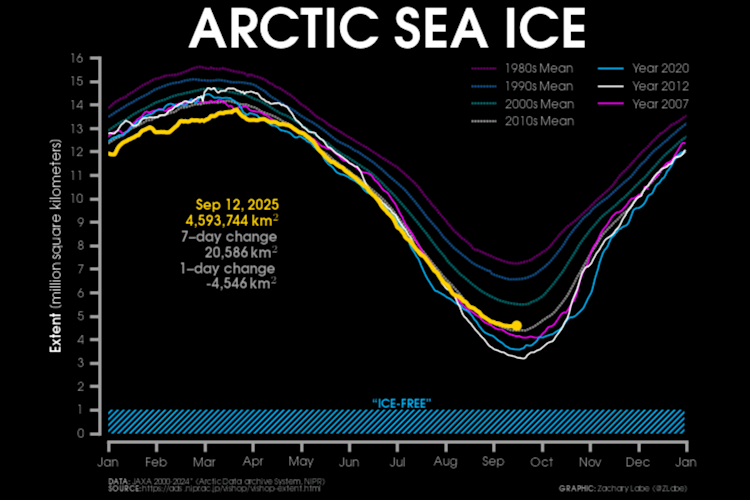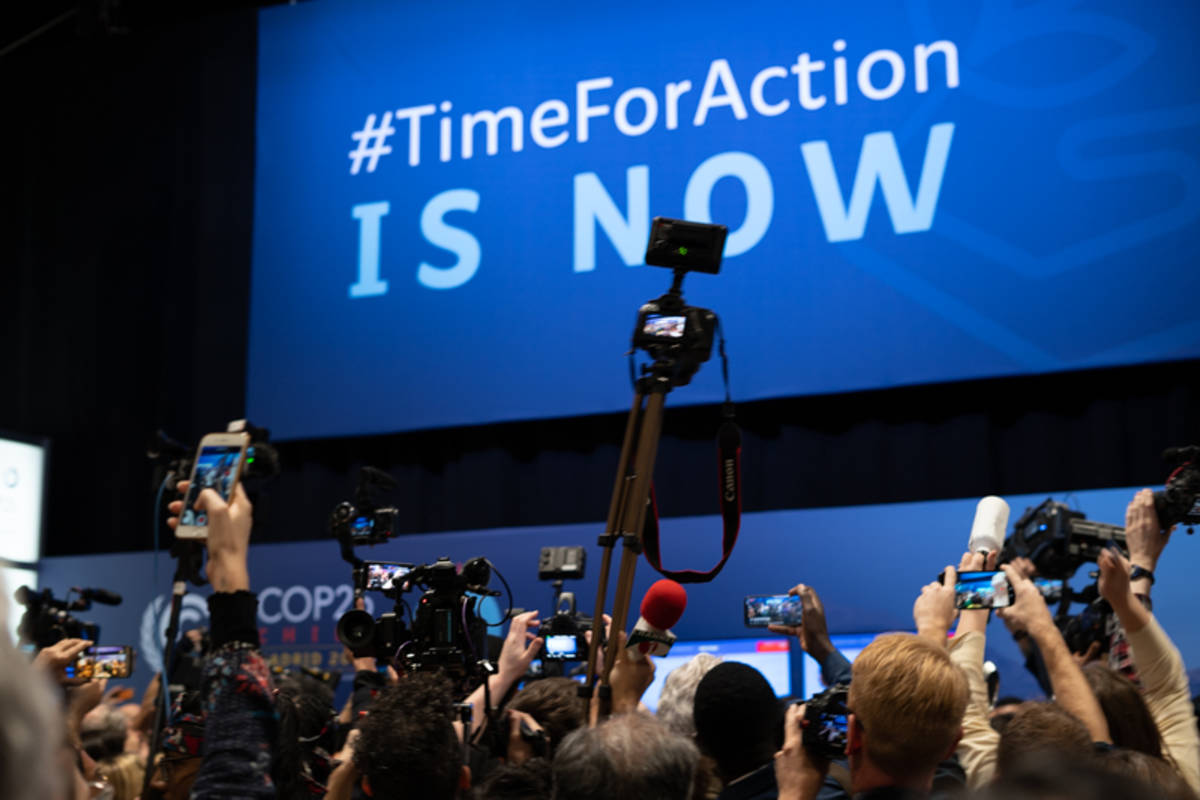
Photo: Christopher J. Carter / polarbearsinternational.org
"Time for action" was a key slogan at the 2019 climate talks in Madrid, Spain. People from around the world gathered to push the needle forward on initiating global progress and action on climate change.
The Clock is Ticking - Reflections from the UN Climate Talks
By Christopher J. Carter
MINS
22 Jan 2020
As I walked through a line of U.N. security guards into the Feria de Madrid negotiation venue in Spain, I looked up. A graphic stretched skyward a few stories tall, at right was a watch face. Across the edge of the watch’s bezel read, “COP25, Tiempo De Actuar (Time for Action).”
With some of the latest freeze-up times in the Arctic, lowest sea ice extent, hottest air temperatures, lowest snow recorded, a disturbing Arctic report card and a fresh IPCC Special Report on the Ocean and Cryosphere this year, the slogan felt far overdue as the world grinds to implementing the landmark Paris Agreement. I slid my bags through the X-Ray machine and walked into the sprawling buzz of the venue. I wondered in my 6th year at this strange climate circus, “Is it possible to act faster at the international level?”
Tick tock. Tick tock. The hour hand spun forward in my mind.
Inside nearly 30,000 people, including indigenous leaders and ministers of the Arctic, filled the massive halls. Thousands of observers, like myself, from science, youth, and faith-based organizations paced the halls. As a climate society on the move we work deep into the nights, with many of the negotiators working overnight sessions. When a new text emerged, whatsapp messages would flood my phone and we would devour the text with some of the best legal minds. Working in briefings with negotiators and nations we collaborated to bring our smartest and most just voice forward. Voices of the people demanding climate justice and action could not have been louder this year—from major protests inside COP25 negotiations, to global youth striking every Friday, and millions of people in the streets.
As an observer with the U.S. civil society delegation, we were granted sessions with the Ambassador to the United Nations, negotiators, and State Department staff.
I shared the latest data and research sea ice and polar bears. Young indigenous Alaskans spoke to challenges in their homelands, the hazard of traditional harvest on thin ice, loss of access to cultural sites and habitat, and development threatening a connection to non-human relations with Nanuuq (Polar Bear) for Inuit and Vadzaih (Caribou) for Gwich’in. They also spoke of real financial barriers and hard tradeoffs for the 30 villages preparing to relocate away or already moving from eroding coasts and rising seas.
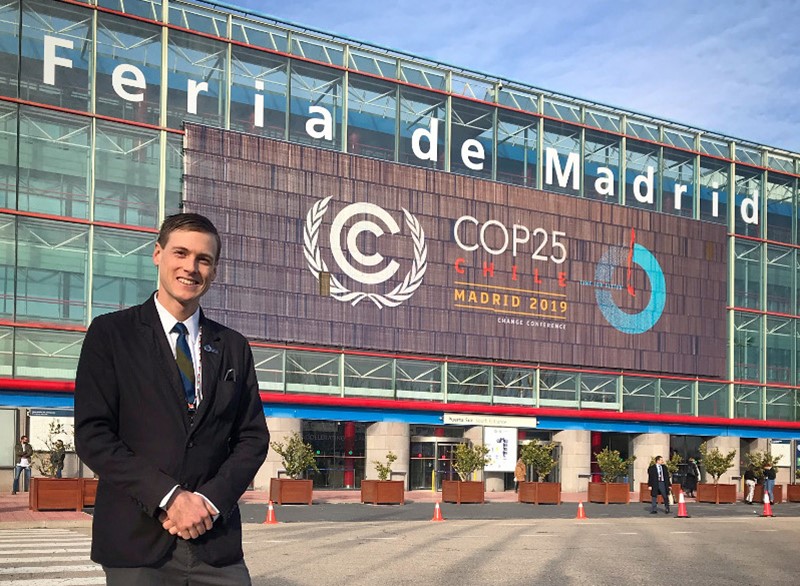
Christopher J. Carter at COP25 in Madrid, where he shared the latest data on sea ice and polar bears. Photo copyright Christopher J. Carter/Polar Bears International.
Loss and damage events, rapid and slow onset impacts of climate change beyond our ability to adapt, are already here. And it’s time to acknowledge that, for the sea ice, polar bears and people in the Arctic. Our words on what is at stake were met with nods. But unfortunately, actions speak louder than nods. Throughout COP25, the U.S. State Department was both observed and reported by fellow national negotiators in closed meetings to be obstructing progress on a decision text and demanding an executive role governing aspects of the Paris Agreement. When pressed, they responded that they are, “looking out for the long-term negotiating position of the United States, regardless of whether or not they remain in the Paris Agreement.” The division between the people and national negotiators was palpable.
Tick tock.
Climate action remains a regulatory and global systems problem best led by federal government action. Rather than feeling personal shame for not owning expensive electric cars, flying to see our grandmothers or having poor access to recycling, the burden must shift back to elected officials and corporations. They have true influence on interventions and federal policy. This will ensure our role as innovators in emission reduction and climate safety—and govern how businesses run and energy is made. Examples include setting new energy standards, building codes, and properly funding renewable energy.
Seventy percent of carbon emissions worldwide come from 100 companies alone, many of which are subsidized by federal governments. The United States today spends 20 billion dollars annually subsidizing oil and gas while the European Union spends 55 billion dollars. While the United States, as the second highest CO2 emitter in the world in 2019, is trending federal subsidies away from coal to renewables, subsidies for natural gas have increased since 2016.
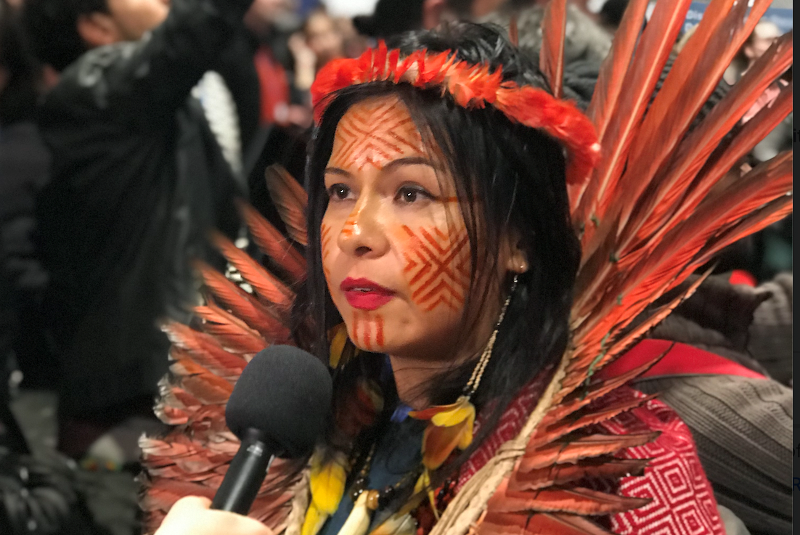
Voices of the people demanding climate justice and action could not have been louder this year. Photo copyright Christopher J. Carter/Polar Bears International.
Globally, governments fund the harm (fossil fuel development) over the cure (proper adaptation, response to loss and damage, and a just transition to renewable energy) by a rough 4:1 ratio. It is critical that world leaders rapidly move away from fossil fuels and implement less carbon-intensive solutions. The cost of inaction across 22 economic sectors in the U.S. alone is about $224 billion a year. By signing onto the Paris Agreement in 2015, 195 nations agreed to limit the warming of the world to 1.5 degrees C. Implementation of the Paris Agreement rolls out now—January of 2020. World leaders now face the real challenge—how do we actually implement this?
Tick tock. Someone has to lead.
Perhaps the biggest actions during COP25 happened not inside the windowless negotiating halls of Madrid, but rather 800 miles north in Brussels where the 27 nations of the European Union Commission announced their very own comprehensive “Green Deal” on December 11th. The plan includes ambitions to become climate neutral and cut emissions 60% by 2050. They will vote on the new climate law in March. Farther north yet, the Danish parliament adopted a new climate law that same week, setting a legally binding target to cut emissions to 70% below 1990 levels by 2030. It’s clear, the European Union and Denmark are ready to lead on climate. The question remains, who will follow?
I’ve never known fellow Americans to step down from a challenge, choose to lose, or quit an easy goal before setting off, like we’ve done with the Paris Agreement. And I know I am not alone, as nearly 70% of US citizens would still like to see their nation in the Paris Agreement. So, can Canada and the United States give the E.U. and Denmark a run for their money? I hope so.
At home in the U.S., it’s time to show up for our brothers and sisters who are faced with climate risks and a need for a just transition today—from life in Houston’s flood waters to those losing jobs from a dwindling coal industry. What we can do at home can help a rapidly changing Arctic. Plus, a transition away from fossil fuels and competing globally can ensure both a safe future for our children and a vibrant economy.
Tick tock. The clock doesn’t stop.
As the final week passed, with little progress made, I couldn’t help but think to myself, “Is it too much to ask for meaningful progress to be made in two weeks? Can 194 people agree on where to go to dinner, never mind our future?!”
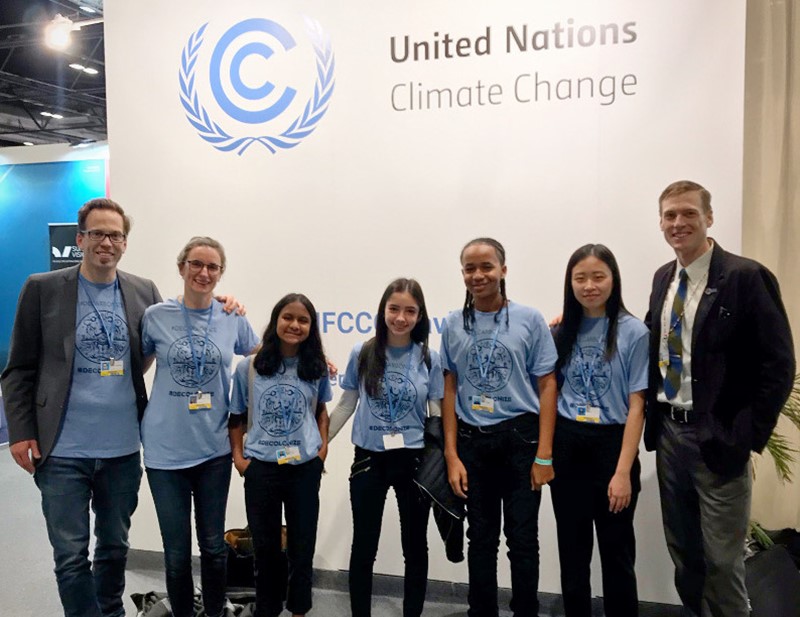
Despite the disappointment of this year's talks, Christopher J. Carter, right, found strength in fellow citizens at COP25, including indigenous leaders and youth. Photo copyright Christopher J. Carter/Polar Bears International.
Ultimately, the 2019 climate talks went a record breaking two days overtime and were largely disappointing. With little significant progress on the text, many milestones were left unmet. Completing the rulebook, particularly setting carbon markets, was kicked down the road to COP26. Nations worked on overdue national ambitions but not all were completed. One success was the completion of a financial plan to help address loss and damage in developing countries (Warsaw International Mechanism). Another success in the corporate space saw 177 companies pledging to cut emissions in line with the Paris 1.5C target as part of the Climate Ambition Alliance. The lack of outcomes and compromise was disturbing.
Tick tock. The clock hands continue to spin.
Starting now we have roughly 10 years and 400,000 gigatons of carbon remaining that we can emit without causing irreversible harm to our planet. To ensure a safe future in the Arctic, 2020 will be a pivotal year. With national elections, action plans due, and emerging global leadership led by the EU, we need to both elect real climate leaders nationally and gain a firm decision at the next COP in Glasgow, Scotland. We must close gaps between people and their governments and make sure that science is not being ignored. For me the duty’s personal, I see Arctic people as brothers and sisters, and I’d like to be known as a steward of polar bears and the sea ice ecosystems they depend on. In addition to a clear financial argument to act, for me it’s an ethical responsibility to act and to be held legally accountable as a nation for the harm we cause in the Arctic. I think we can all agree that taking care of each other, and the natural climate systems that have been handed down to us, is the right thing to do.
With the climate talks running overtime, I packed my bags to return home. I could still hear the clock—tick tock, tick-tocking—in my head. It hasn’t stopped.
Strangely, leaving Madrid I felt strength rather than apathy or hopelessness. I felt strength in my fellow citizens—indigenous leaders, youth, and scientists I’ve come to know who lead, hold the long view, and speak as a united front. Hope remains, but we must show up, speak up, and act. Working towards a safe future for polar bears, the Arctic, and ourselves means collaborating—with Arctic people, those who have access to power, and folks who we don't usually talk to. It will have to be us, not technocrats, who define 2020 and a safe Arctic future for all. It’s time to find shared values, vote, and lead.




